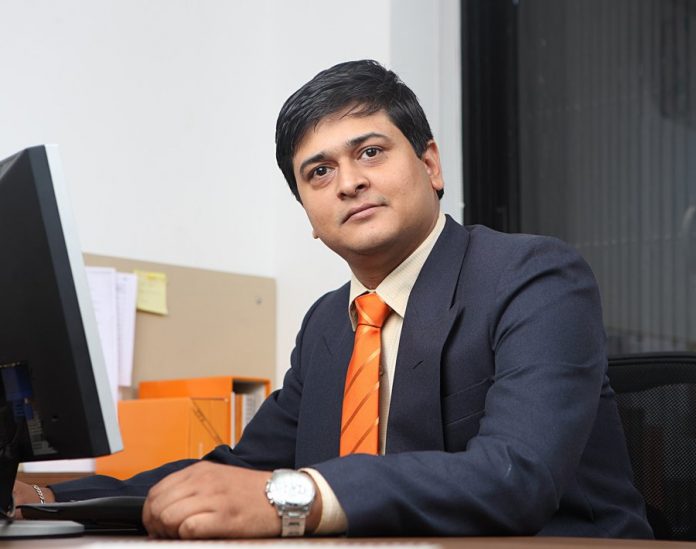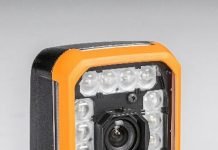While having a recent interaction with Dinesh Mungi, responsible for the automation business at B&R’s Pune region and the company’s resident packaging expert, we understood better how brand owners and contract packaging companies look at automation. Mungi reassured Packaging South Asia’s editor Naresh Khanna that automation in packaging is not merely talk but is something that machine buyers expect and the machine makers use to raise the bar against hyper-competition and price war.
PSA – Please speak about your company’s interest and role in the packaging industry.
Dinesh Mungi: B&R is providing solutions for various packaging machines for many years and, together with the premium machine builders, has created many milestones. Packaging is one of the focused industries globally for us. We believe in providing complete solutions to our OEM by being a technology partner to them. We are typically not just selling products but always focus on solving customer challenges and making futuristic machines.
When a machine builder approaches us, we always focus on the value-add we can introduce in their machine to achieve better performance and features that are of use to their customers. So, we need to be driving technology and understanding the trends to advise machine manufacturers to build in what is now required and be future-ready.
OEMs need to adapt many customizations in their standard machine to meet customer demands in today’s scenario. So, having flexibility in automation solutions is a key factor for them. Allow me to give you an example, most of the VFFS machines have standard functionality with many selectable options. So, B&R has come up with something that we call ospVFFS – a scalable out of the box solution. This is a plug-and-play solution for OEMs.
All the machine configuration can be done from an HMI. The entire machine can be commissioned and started within 3 hours. It has terrific flexibility to configure from 1-axis to 7-axis servo solutions with options to choose directly from the HMI screen.
PSA – Are the OEMs and end-users in India getting more interested in automation?
Dinesh Mungi: Yes! In the packaging industry, much customization is happening, mainly driven by consumer demand. There are packaging machine manufacturers who sell catalog products but catalog products with additional options or accessories or a customized solution. Here B&R offers a good solution.
Since we have a vast product basket, our role is to give them the right product and to get them ready for the future right at the beginning. For instance, to future proof the OEMs machine design for IoT requirements right from the start. And then, since we come from a software background also, the OEM’s say I need this option and that option. When we ask them why, they say, ‘When we go to sell our machine and tell the customer that this is our standard machine, the customers say, adapt it in our way.’ Thus, there is a demand for automation from the end-user also.
There is a need for flexibility, and there is a sensitivity to the need for automation. If I see today’s scenario, the customers are looking for flexibility somewhere down the line. The definition of flexibility changes according to the brand name. There are two kinds of flexibility – big brand owners ask for high automation, contactless production, and connectivity to the cloud. For the rest of the customers, flexibility means packing different formats and products on the same machine, or what we would call mass customization. Can the same machine run three other products in a variety of designs with a simple changeover?
Today, the consumer demand is almost infinitely varied – if you go to any grocery shop, you will see a 100 Rupee packet and a five Rupee packet for the same product. It is a bulk order for a contract packer, and he wants to complete it and change it to the following order. So, there are both kinds of demands for automation – one is for sophistication by the big brand owners with in-house packaging plants. The other is for fulfilling the mass customization and fast changeover of generally, the contract packers.
PSA – How many of the packaging machine customers are looking to modernize or automate?
Dinesh Mungi: It started with few; I would say. A few of the OEM leaders who were sensitized said, ‘Now many competitors are coming in, and since it is becoming more of a price war, let us do something more.’ They started pushing up the bar. They started speaking something different. Then there were the followers who said, ‘I should also automate!’
But now, the demand is coming from the brand owners and contract packers who want the flexibility. Currently, there is pressure from the end-users. ‘If you want to sell your machine to me, I want data on the cloud, and I want IoT implementation.’ This kind of request started coming from the brand owners.
OEMs also started speaking on this topic and learning the technologies and phrases of automation. So they started saying, ‘We will give you a PackML compliant machine, or I will give you a machine that is compliant to your IoT.’ Of course, everybody had their solution, but they were keen to project these features. And even the smaller OEM is not behind in this case. They also want to grow, and they see an opportunity in modernization and automation.
PSA – What are the challenges for more productive use of automation in packaging?
Dinesh Mungi: The challenge is understanding and adapting to the new technologies. For instance, IoT is a vast thing, and we need to create a better account of the concepts, technologies, and its parts and the opportunities each aspect brings to the machine, to the user. For instance, ease of operation, monitoring, maintenance, and energy savings are a multiplicity of concepts.
However, there has been an improvement in understanding over the past 18 months – in the pandemic. For instance, not accepted earlier, the industry has realized remote installation is possible, and they want it. Recently customers have asked for a remote diagnosis of a breakdown and asked if we can fix it before sending an engineer or technician.
Also, companies have realized that they need trained and skilled people within their plants. Trained technicians are necessary to use and benefit from the automation.
PSA – What are some of the other outcomes of the pandemic – so far?
Dinesh Mungi: There is an increase in the use of machines for primary and secondary packaging. There is a big demand for primary packaging and end of line solutions. The automation concept in end-of-line (EOL) for hands-free packaging is also increasing with robotics. The use of vision for defect detection and other operations has improved a lot. Earlier it was there in pharma, but it has expanded and spread to different segments recently.
Also, the machine customers are talking about the ROI, and they want the machines to be faster. However, there is also a break or delay in some of the more significant projects. As a result, major contract plants are holding on before their decision-making.
PSA – Finally and briefly, what is needed for the automation of packaging machines in India?
Dinesh Mungi: For the automation of packaging and also for exports, three things need to be considered and are important factors. Firstly, we need to build more servo-based and faster or high-speed machines. Secondly, we need to incorporate diagnostics – we need to ask how far can I diagnose a breakdown, the condition of the machines in the market, and what aspect or module is possibly needing attention. And, lastly, the OEMs should be thinking about building-in the internet connectivity of the machine.
PSA: Thank you. This sound advice could work for automating and modernizing practically any machine in any segment!










